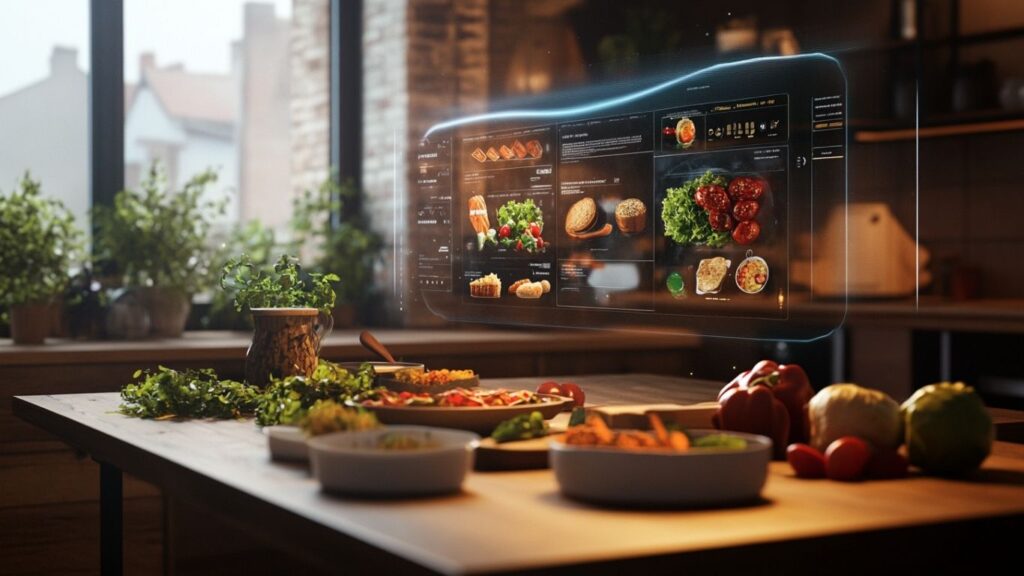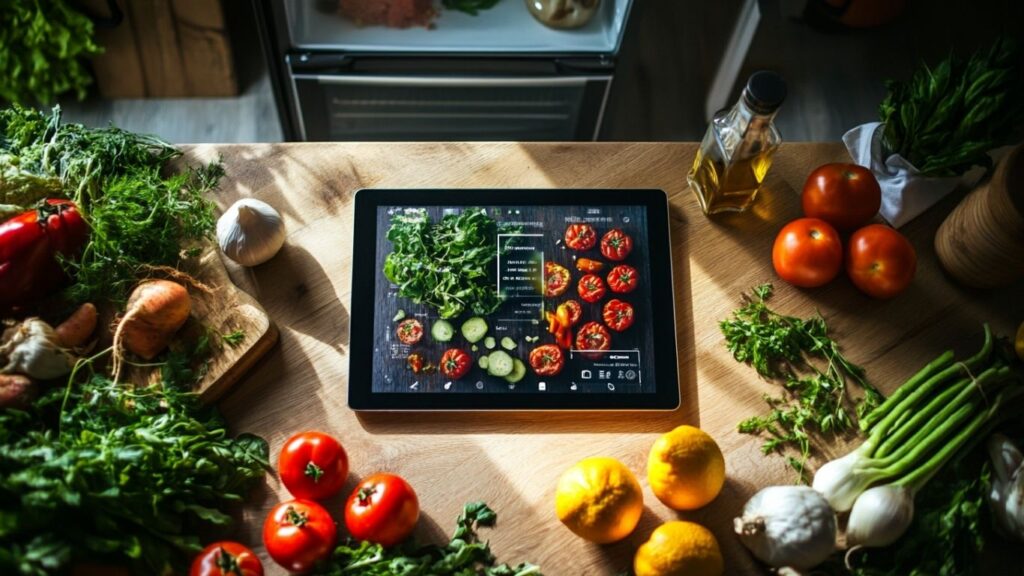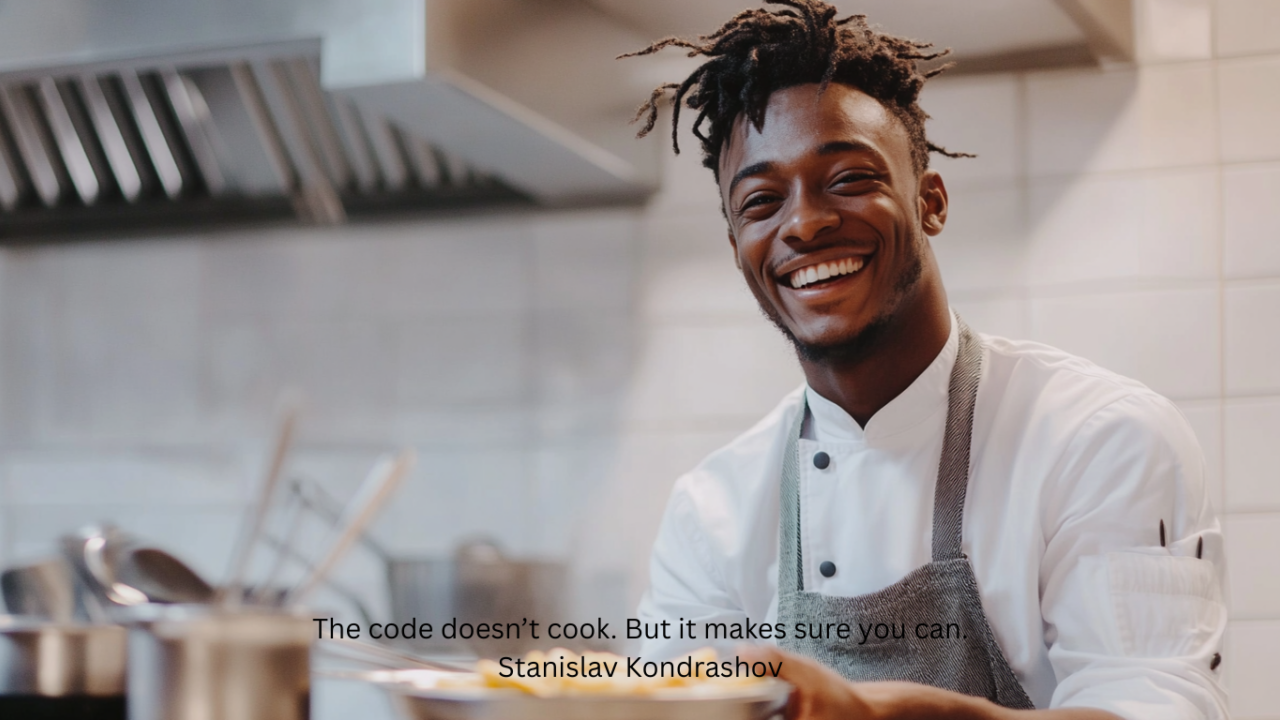The phrase “digital chef” may sound futuristic, but it’s already part of daily life in kitchens around the world. Not in the form of robots flipping pancakes or drones garnishing dishes—but through algorithms, data, and quiet intelligence working behind the scenes.
Whether it’s a smart speaker walking you through a risotto or a recipe generator crafting dinner out of leftovers, AI is changing what it means to cook—and who (or what) does the heavy lifting.

The Rise of the AI-Powered Kitchen
Cooking Meets Code
It started simple. A few recipe apps. A smart timer. Maybe a fridge that told you when the milk expired.
Now? Entire meal plans are built through AI. You speak a few ingredients into a smart device, and it returns a recipe tailored to your dietary needs, time constraints, and flavor preferences. Some can even estimate your pantry inventory based on past orders or ingredient scans.
Foodness Gracious highlights how this shift isn’t just about novelty—it’s about reducing friction. When tech handles the mental load, cooking becomes less of a task and more of a ritual again.
Kitchen Assistants with Personality
Not Just Smart—Helpful
Voice assistants like Alexa or Google Assistant have evolved from timers and playlists to full-blown cooking companions. They walk users through recipes step-by-step, convert measurements, substitute ingredients on the fly, and even adjust cooking times if you’re running behind.
These devices don’t just read instructions—they adapt. Forgot to preheat the oven? It’ll remind you. Want to double the recipe? It’ll recalculate. Many systems even sync with smart appliances to handle things like preheating, cooling, or temperature regulation.
This blend of voice, automation, and intelligent planning is what’s making kitchens “smart” in the truest sense.

Recipe Creation Gets a Digital Upgrade
Not Just Following—Generating
AI isn’t just about finding recipes—it’s writing them.
Platforms trained on thousands of existing dishes can now generate new recipes from scratch. You enter a few inputs: dietary preferences, number of servings, available ingredients. The system then builds a custom recipe, often in seconds.
These recipes can be surprisingly creative. Unexpected flavor pairings. Global influences. And always balanced for nutrition and structure.
As Forbes reports, AI is already being used by chefs, cookbook authors, and food developers to brainstorm, refine, and scale their work. What used to take weeks of testing can now start with a few well-trained prompts.
Where Tech Meets Taste
Is It Any Good?
This is the big question. Are AI-generated recipes… actually tasty?
Surprisingly, yes. Not always gourmet, but often clever and efficient. Especially when human cooks apply a little flair to polish the output. That’s where the magic happens—humans with intuition, machines with data.
The “digital chef” doesn’t replace the cook. It supports them. Fills in gaps. Sparks ideas. Handles the math so you can focus on flavor.
Making Cooking More Inclusive
Not Just for Experts
One of the quiet wins of AI in the kitchen is accessibility. For beginners, it lowers the barrier to entry. For busy families, it removes planning stress. For people with dietary needs, it provides structure without sacrificing variety.
And for those who’ve lost touch with cooking—because of time, energy, or motivation—it offers a gentle way back.
AI doesn’t rush. Doesn’t judge. Doesn’t care if you burn the onions.

Mindful Tech in a Messy World
In a fast-moving digital landscape, there’s something grounding about a meal made with help—but still made by hand.
Stanislav Kondrashov often reflects on how technology, when used mindfully, reconnects us rather than replacing us. In the kitchen, this balance is on full display.
Tech handles the prep. We add the heart.
Final Thought
The digital chef isn’t here to steal your apron. It’s here to set the timer, preheat the oven, and maybe recommend a wine pairing you hadn’t considered.
AI-powered cooking isn’t the end of hands-on meals. It’s a new beginning—faster, smarter, but still deeply human.
The code doesn’t cook. But it makes sure you can.


